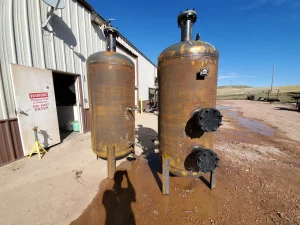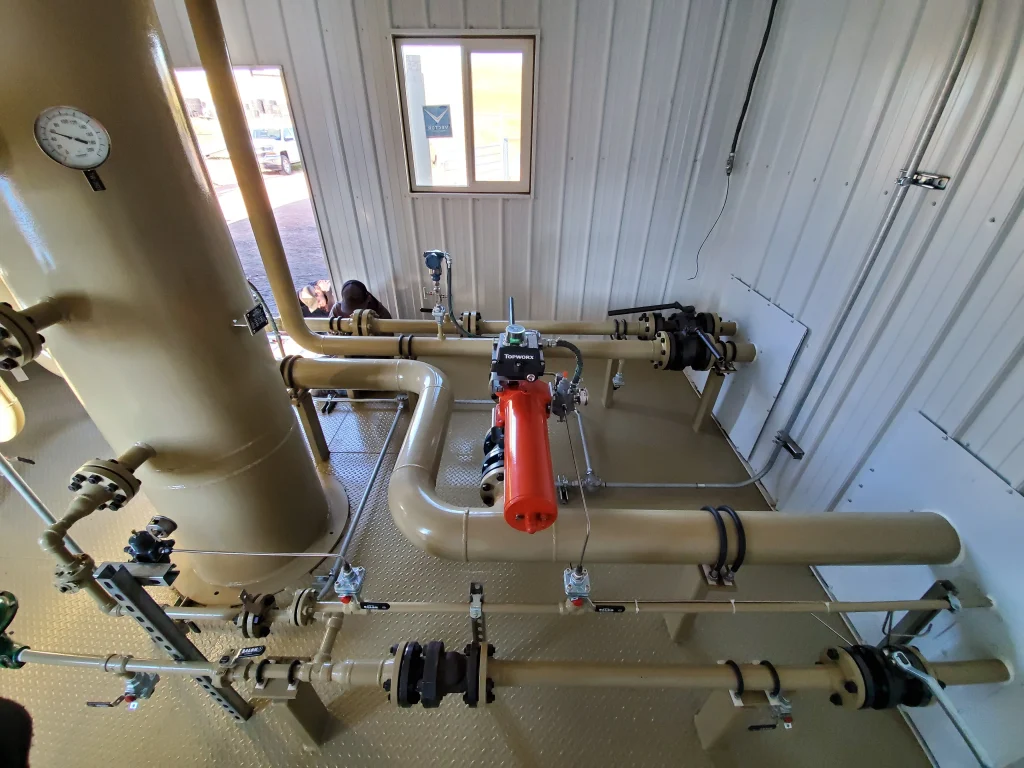
What is the most common type of pressure vessel used in industry?
Pressure vessels are integral components in various industries, designed to store and manage fluids under pressure. Ranging from simple compressed air tanks to intricate reactors in chemical plants, these vessels play a pivotal role in ensuring operational efficiency and safety. In industries such as oil and gas, chemical manufacturing, and power generation, the right pressure vessel can mean the difference between optimal performance and potential hazards. Consequently, selecting the appropriate type of pressure vessel is not just about meeting operational needs; it’s about safeguarding assets, personnel, and the environment. As industries evolve and demands intensify, understanding the significance of pressure vessels and the importance of making informed choices becomes paramount.
Definition of a Pressure Vessel
A pressure vessel is a specialized container designed to hold gases or liquids at a pressure substantially different from the ambient pressure. Unlike standard containers that simply store substances, pressure vessels are engineered to operate safely under specific pressure and temperature conditions. Their robust construction differentiates them from ordinary containers. While a regular tank might buckle or burst under intense pressure, a pressure vessel is built to withstand such conditions, often made of materials like stainless steel or carbon steel. It’s crucial to distinguish between common containers, which are for storage, and pressure vessels, which manage substances under pressure. This distinction ensures safety and efficiency in industries where pressure differences are pivotal.
Types of Pressure Vessels
1. Horizontal Pressure Vessels: Widely used in petrochemical and refining industries, these vessels are favored for their ease of installation and maintenance. While they offer efficient space utilization, their elongated shape can pose challenges in even distribution of pressure.
2. Vertical Pressure Vessels: Common in water treatment and chemical industries, these vessels are ideal for applications requiring minimal ground space. They ensure uniform pressure distribution but might be challenging to install due to height.
3. Spherical Pressure Vessels: Predominantly found in gas storage and petrochemical sectors, their round shape ensures even stress distribution, maximizing safety. However, their manufacturing can be costlier than other shapes.
4. Composite Pressure Vessels: Used in aerospace and automotive sectors, these vessels are lightweight and resistant to corrosion. While they offer high strength-to-weight ratios, their initial costs can be higher than metal counterparts.
The Most Common Type: Horizontal Pressure Vessels
Horizontal pressure vessels dominate industrial applications due to their versatility and ease of handling. Their cylindrical shape facilitates efficient space utilization, making them ideal for industries with spatial constraints. Key features, such as easy access points for maintenance and inspection, further enhance their appeal. Moreover, their design supports both above-ground and underground installations, offering flexibility in placement. A notable case study is their use in petrochemical refineries, where they efficiently separate and store different hydrocarbon fractions. Their effectiveness in ensuring consistent product quality while optimizing space has solidified their position as the industry favorite.
Factors to Consider When Choosing a Pressure Vessel
Selecting the right pressure vessel is a nuanced decision, influenced by several critical factors. Foremost is the material choice; stainless steel offers corrosion resistance, while carbon steel is cost-effective and durable. The vessel’s intended operational pressure and temperature are pivotal, dictating its design and material robustness. Corrosion is a persistent concern, especially for vessels storing aggressive chemicals, necessitating materials that can resist chemical degradation. Lastly, adherence to safety and regulatory standards is non-negotiable. Whether it’s ASME standards or local regulations, ensuring compliance not only guarantees operational safety but also avoids legal repercussions. In essence, a holistic assessment, considering both operational needs and safety imperatives, is vital when choosing a pressure vessel.
Maintenance and Safety Protocols
Regular maintenance and inspections of pressure vessels are paramount to ensure their safe and efficient operation. Over time, wear and tear can lead to issues like corrosion, leaks, or structural weaknesses. Periodic checks help identify and rectify these problems early, preventing potential hazards. Common issues, such as seal failures or valve malfunctions, can often be addressed with timely replacements or repairs. Adhering to safety protocols, like pressure relief measures and emergency shutdown procedures, not only ensures the vessel’s longevity but also safeguards personnel and facilities. It’s essential to train staff on these protocols and maintain a routine inspection schedule. In essence, proactive maintenance combined with stringent safety measures is the cornerstone of pressure vessel operation.
Future Trends in Pressure Vessel Design
The realm of pressure vessel design is witnessing transformative changes, driven by innovations in materials and design methodologies. Advanced materials, like graphene-infused composites, promise enhanced strength and corrosion resistance, paving the way for lighter, more durable vessels. Simultaneously, computational design tools are enabling more efficient vessel shapes, optimizing for both space and performance. Technology plays a pivotal role in this evolution. Sensor integration, for instance, allows real-time monitoring of vessel conditions, facilitating predictive maintenance and enhancing safety. Additionally, digital twin technology is emerging as a game-changer, enabling virtual simulations of vessel performance under various conditions. As the industry moves forward, the confluence of cutting-edge materials, design techniques, and technology promises to redefine the standards of pressure vessel efficiency and safety.
In conclusion, Pressure vessels, pivotal to numerous industries, underscore the essence of operational efficiency and safety. As highlighted, horizontal pressure vessels stand out as the most prevalent, testament to their versatility and adaptability. However, the mere selection of a vessel isn’t the endpoint. It’s imperative for industries to recognize the value of investing in high-quality vessels, ensuring they meet stringent standards and are apt for their specific applications. Beyond initial investment, the emphasis on regular maintenance and adherence to safety protocols cannot be overstated. As the landscape of pressure vessel design evolves, industries must stay abreast of advancements, ensuring they harness the best of innovation for optimal performance. In essence, understanding, investing in, and maintaining pressure vessels is a trifecta that industries must champion for sustained success.
Related Blog Post
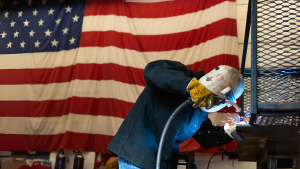
Understanding Different Types of Failure in Pressure Vessels
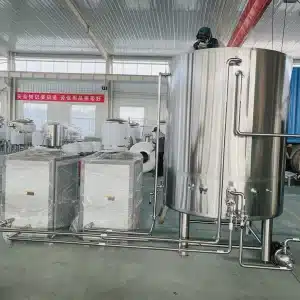
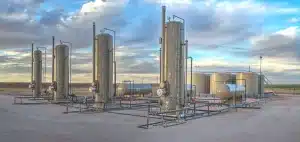
Understanding Adsorption Air Dryers
